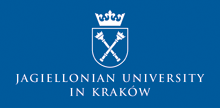Speaker
Description
Violation of the combination of two discrete symmetries C (charge conjugation) and P (parity) is a very important mechanism in the Standard Model. It is, for example, one of the conditions for existance of asymmetry between matter and antimatter in the Universe. One of the purely CP-violating process, which is still not discovered is the $K_S \rightarrow 3\pi^0$ decay.
The best upper limit on the branching ratio of this process BR($K_S \rightarrow 3\pi^0$) $< 2.7 \times 10^{-8}$ was measured with the KLOE detector operating at the DA$\Phi$NE collider located in the Italian National Center for Nuclear Physics in Frascati [1]. At the same time, predictions based on the Standard Model give us BR($K_S \rightarrow 3\pi^0$) $\sim 2 \times 10^{-9}$, which is one order of magnitude smaller than the measured upper limit. Thus, further investigation of this process is needed to test the Standard Model predictions.
In this respect, analysis of the KLOE-2 data sample [2] has been started aiming to significantly improve the present upper limit. As an alternative to the classic cut-based analysis, we plan to use multivariate analysis algorithms. In this work we show preliminary tests of available multivariate analysis algorithms applied to the KLOE data, to check the feasibility of this approach. The obtained results are comparable to the cut-based analysis [1] with two times higher signal efficiency showing a big potential of this method.
References
[1] D. Babusci et al. [the KLOE Collaboration], Phys.Lett. B723 (2013) 54-60
[2] G. Amelino-Camelia et al., Eur.Phys.J. C68 (2010) 619-681

